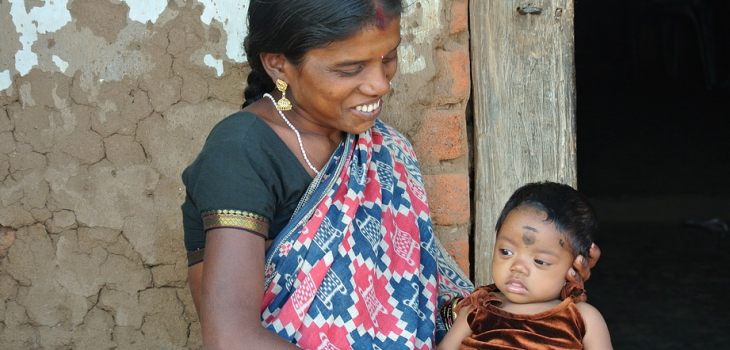By Lenka Benova (London School of Hygiene & Tropical Medicine)
As the day of delivery approaches, pregnant women around the world make preparations for childbirth. Many choose which health facility to attend for the delivery, and make plans about how to get there when the time comes. Some women make a decision to deliver at home – and many women in low- and middle-income countries have no choice but to deliver at home due to the distance to a suitable health facility or the personal and financial constraints of seeking institutional care. However, the care all women experience during their first childbirth will inform their choice of delivery location for subsequent pregnancies.
As the 2016 Lancet Maternal Health Series observed, “Every woman, every newborn, everywhere has the right to good quality care.” With more than 53 million women around the world accessing no delivery care at all, it is essential and urgent to understand delivery decisions and the pathways women take through pregnancy and childbirth.
Our new study published in Health Policy and Planning uses Demographic and Health Survey data from 39 low- and middle-income countries to assess the extent and determinants of switching delivery location between women’s first and second deliveries.
Should I stay or should I go?: Consistency and switching of delivery locations among new mothers in 39 Sub-Saharan African and South/Southeast Asian countries found that in the majority of cases, women did not switch delivery location between first and second deliveries.
Among women who did switch, the larger stream was away from facilities and toward home births. In this analysis of over 30,000 women, only 12% of those who had their first birth at home delivered their second child in a health facility, while 22% of women with their first birth in a facility switched to a home location for their second delivery. It seems that many of the women who made a special effort to go to a facility for their first delivery or perhaps needed to seek care in health facilities due to a complication, did not subsequently return to facilities for their second births.
Why do women switch away from facility deliveries?
Why are women being lost from facility delivery after their first experience? We know that delivering in a health facility is no guarantee of good quality and respectful maternity care. High rates of switching away from facilities may signpost serious quality, accessibility, acceptability, or affordability barriers.
Perceptions of second births as safer may also lead women towards a home delivery for a second pregnancy, if the first birth was “uncomplicated”. Our analysis showed, unsurprisingly, that the characteristics of women who delivered at home following a first birth in a facility were younger age, lower educational level, rural residence, household poverty, incomplete antenatal care and lower overall community levels of facility delivery. Women in such circumstances are likely to lack the financial and social capital to continue using health services for themselves, especially as some of the scarce household resources and women’s time is dedicated to the first-born child.
“We’ve made lots of efforts to encourage women to seek health care at childbirth because of the potential benefits for the mother and child,” explains Oona Campbell, Professor of Epidemiology and Reproductive Health at LSHTM and co-author on the paper, “so it is crucial to understand if and why women seeking care then cease to do so after their first experience of that care. This paper is so important because it is the first time this issue has been unpicked.”
“Switching away from facilities for second birth is a big warning sign that we’re doing something wrong there; facilities are failing to retain women.”
Lost from facility delivery, lost from the health system
The implications of switching away from facilities extend beyond the dangers of childbirth complications or emergencies without fast recourse to referral and medical assistance. Research has shown that positive experiences with good quality care at childbirth serve as important opportunities to link women and their families with other preventative and curative health services across their lifespan.
Why do women switch toward facility deliveries?
Our research showed that only in two countries, Cambodia and Burkina Faso, did the data show a net effect of switching towards facilities for second births.
What is special about these two countries, that they would break the pattern? Evidence suggests that increases in the provision of facility delivery care and demand creation for this service have been so rapid as to influence the women between the first and second births. The lesson for other countries is that even women who deliver at home can be convinced to come to facility if that is where the focus and efforts of health systems lie.
Higher education, urban residence, non-poor household status, and multiple gestation were all factors associated with switching to a facility after a home delivery. However, we also found that that negative experiences (such as whether the first child was alive at the time of the second birth, or whether the first birth was by a caesarean section) might be more important to switching from home to facility births than positive experience is to retention in facility-based care.
Should I stay or should I go?: consistency and switching of delivery locations among new mothers in 39 Sub-Saharan African and South/ Southeast Asian countries
Lenka Benova, David Macleod, Emma Radovich, Caroline A Lynch and Oona M R Campbell
Lenka Benova (LSHTM) is a quantitative population health scientist with training in management, economics, Middle East studies and demography. As a co-investigator in the Maternal healthcare markets Evaluation Team (MET), she currently leads the SAGE (Secondary data Analysis for Generating new Evidence) team. Previously, she headed operations in a start-up company in eldercare in the United States and worked as project coordinator with Médecins Sans Frontières in Nigeria, the West Bank and South Sudan. She was responsible for the design, implementation and evaluation of the health pillar of a conditional cash transfer program in Egypt between 2008 and 2010.











